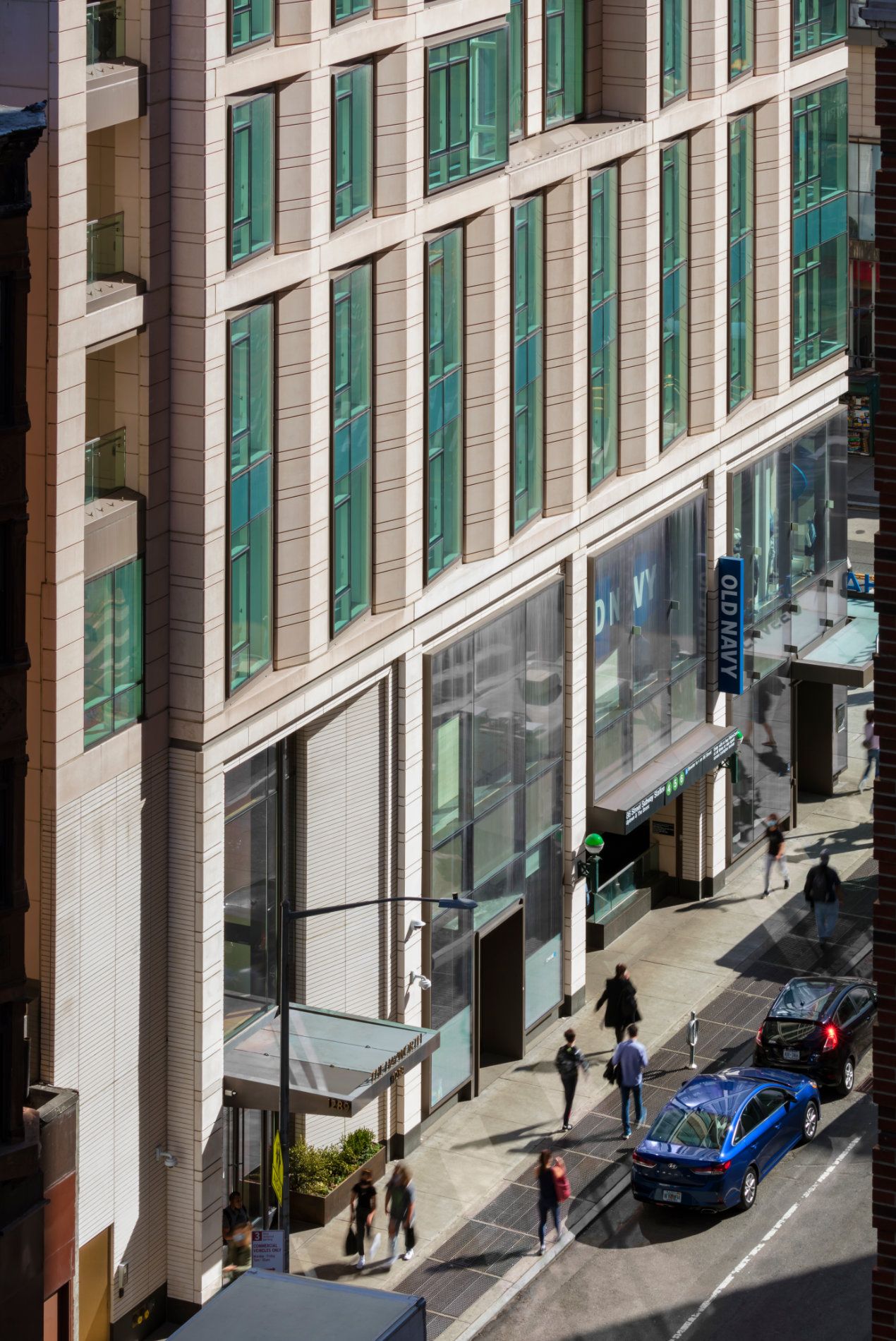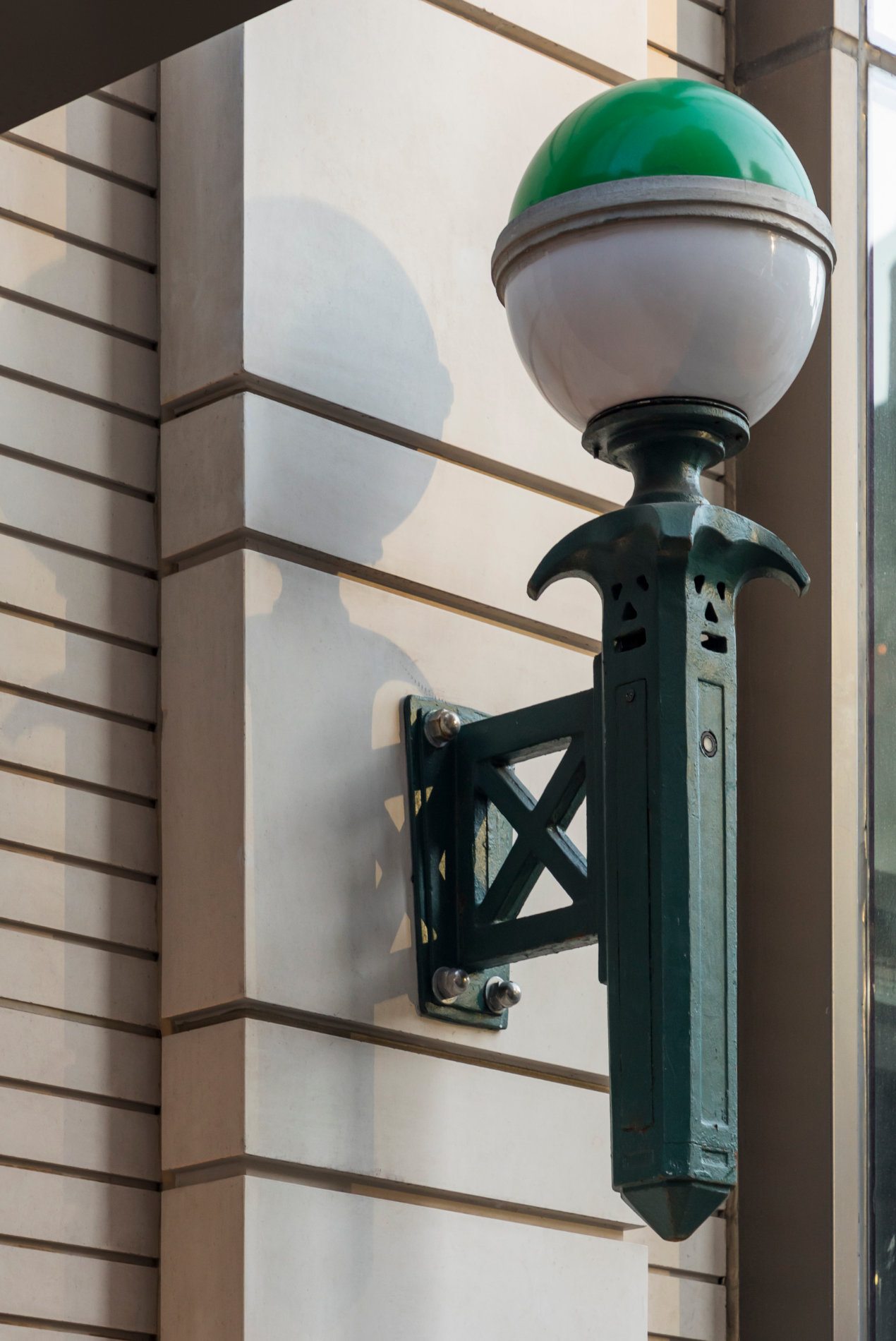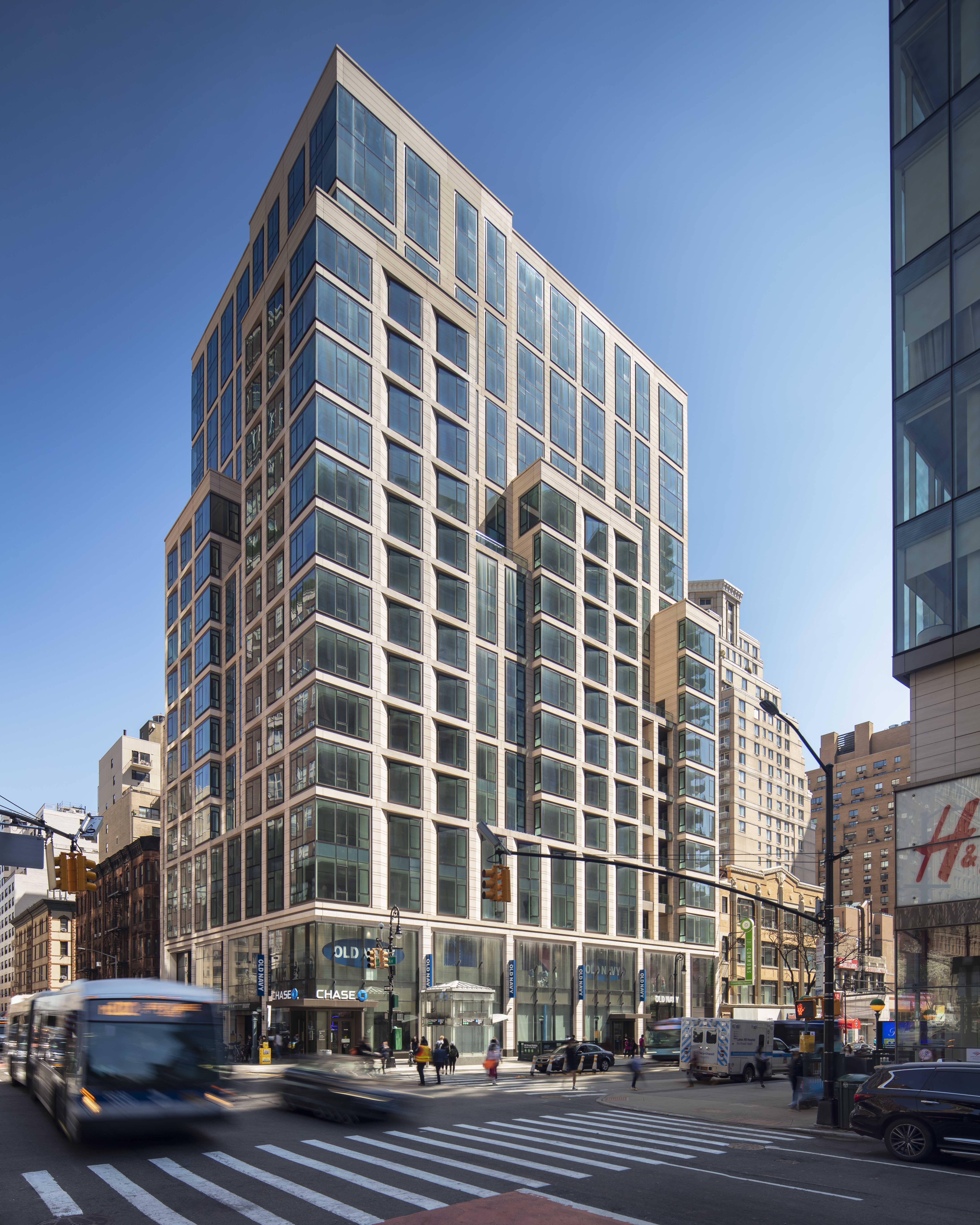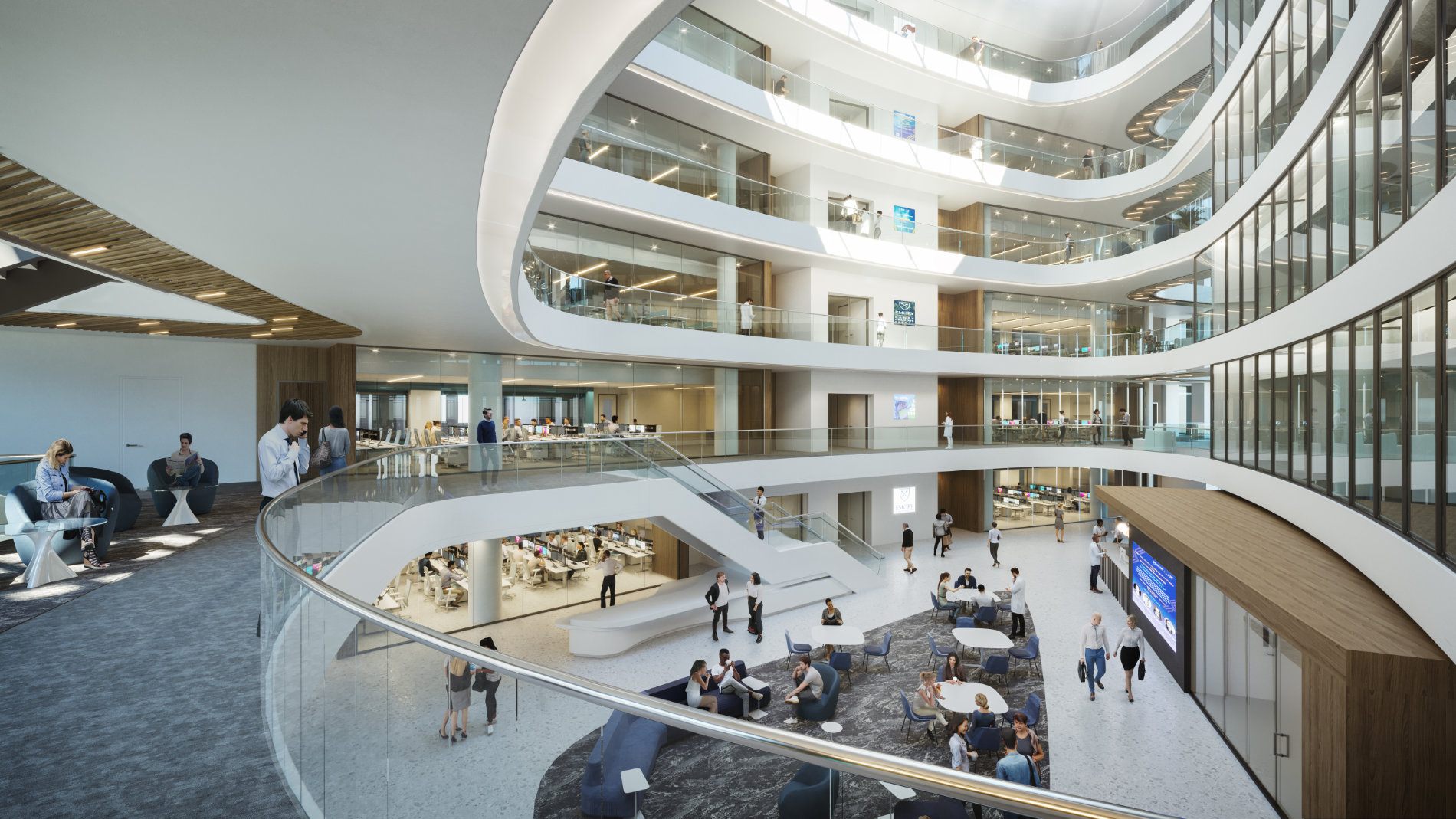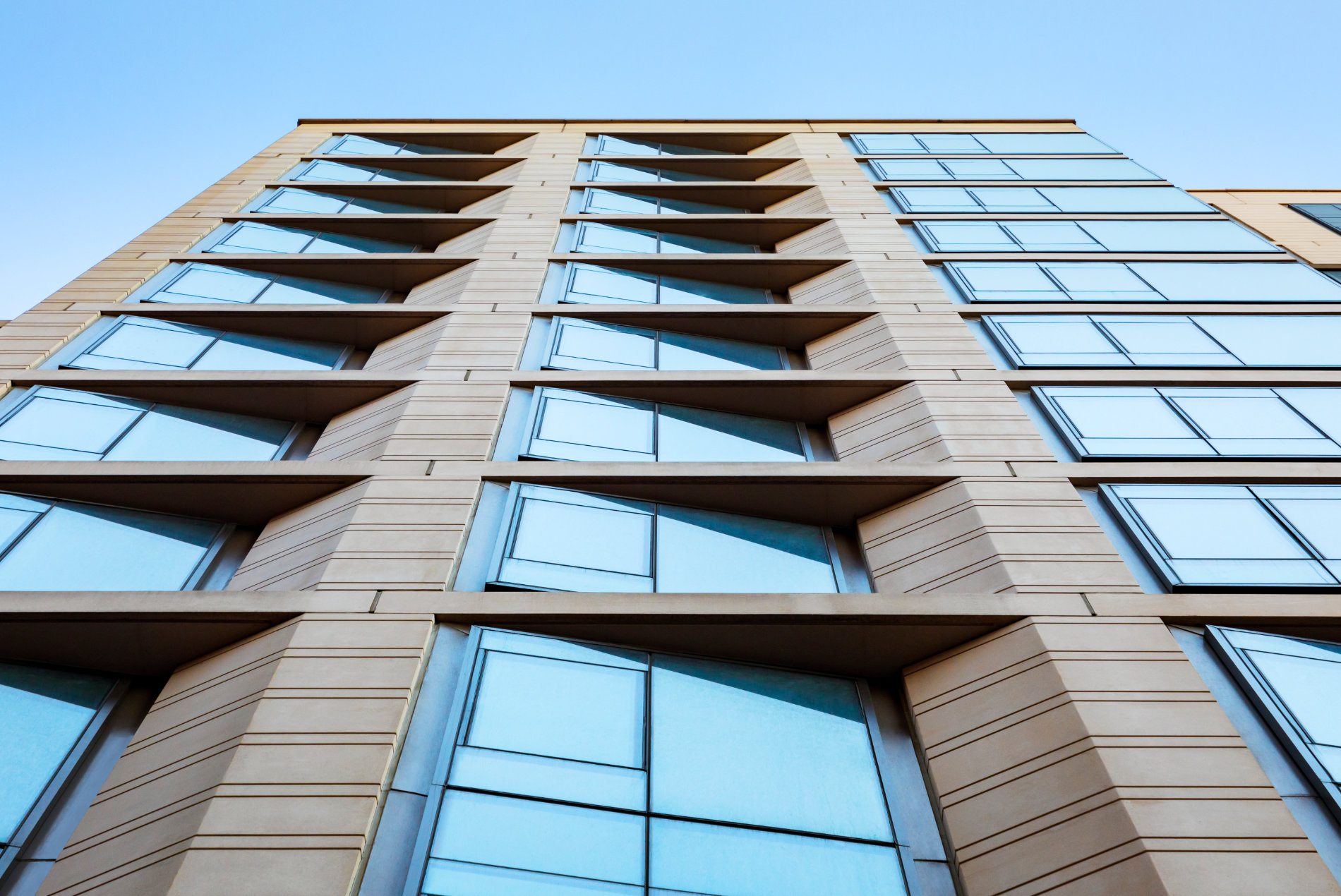
The energy-efficient facade fuses classic and contemporary design elements. Portuguese limestone cladding recalls the traditional stone buildings of the Upper East Side. Large glazed openings reflect a modern, cast-in-place concrete structure.
The high-performance glazing is argon-filled, triple silver coated, low-E glass. Use of continuous insulation maximizes thermal performance while controlling moisture and serving as an air barrier.
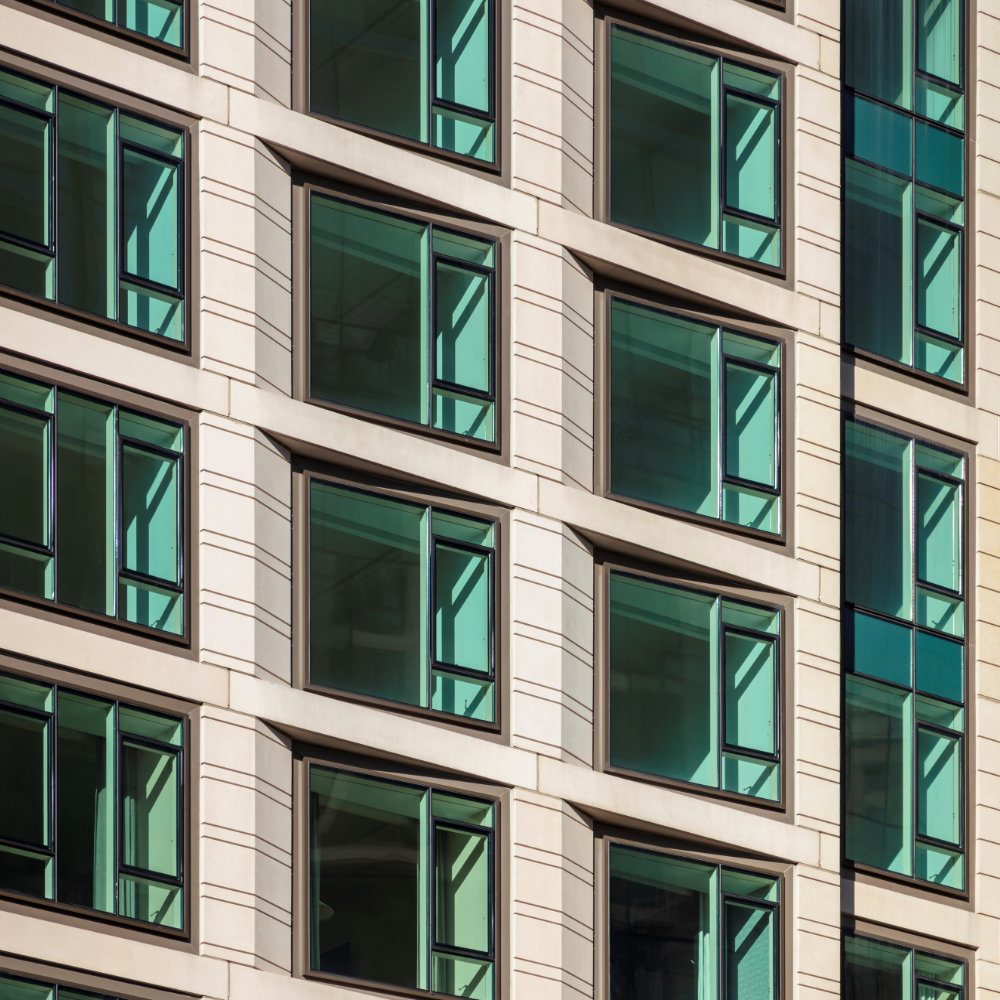
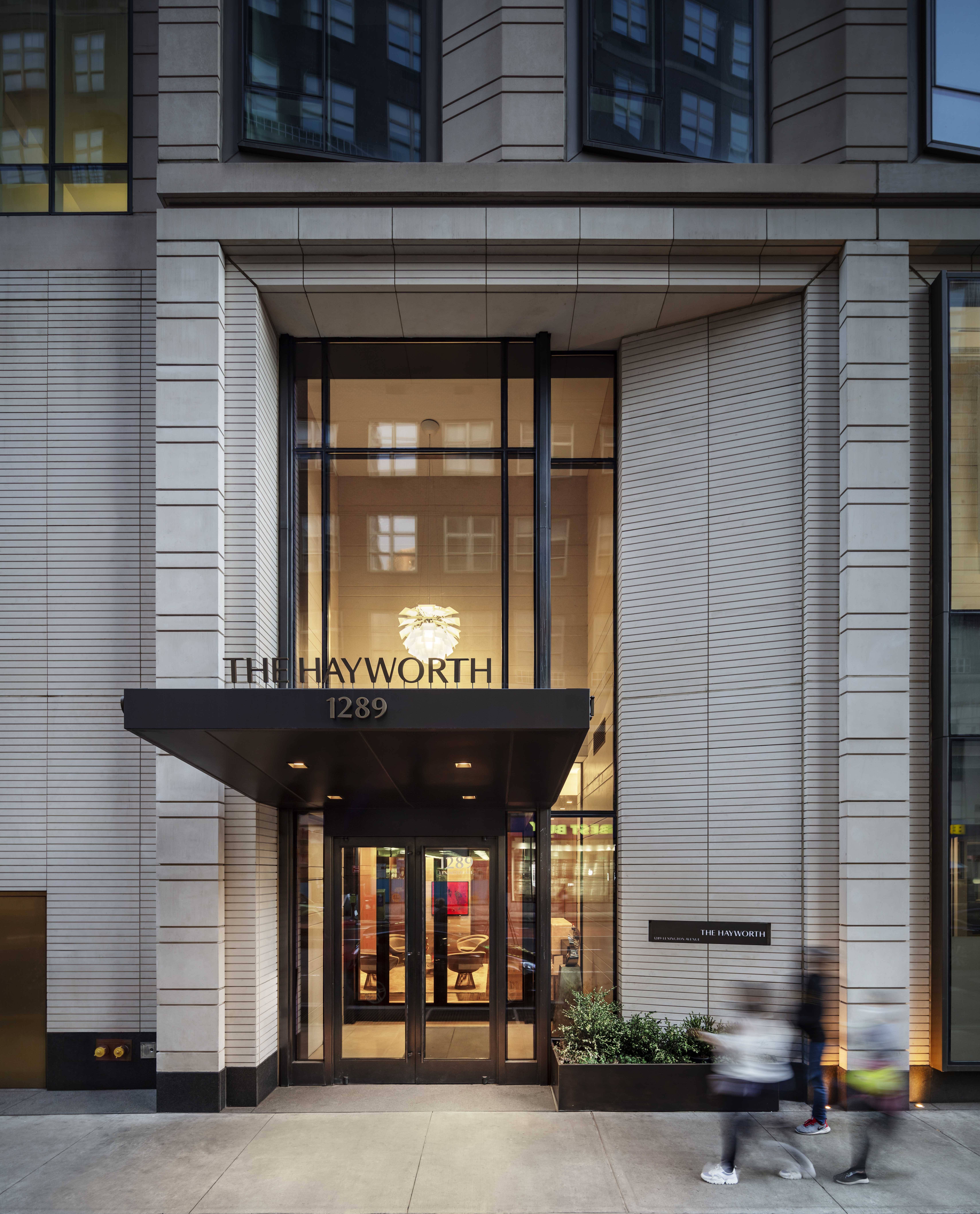
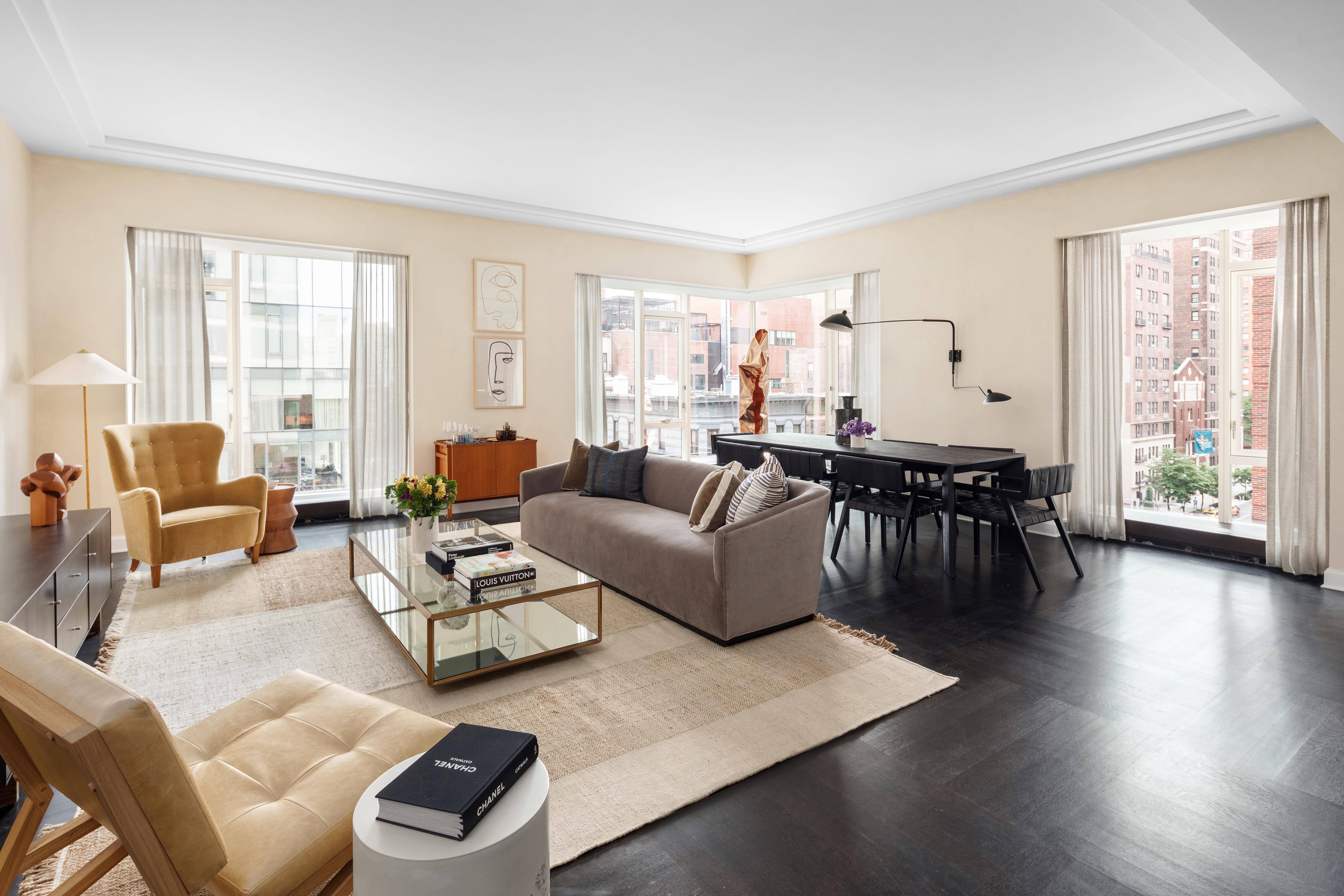
Family-sized units feature open, loft-style living spaces with secluded bedrooms that connect to en-suite facilities.
Two penthouse units have access to rooftop cabanas with outdoor kitchens, fireplaces and expansive city views.
The entire building has operable windows. Several units have direct access to outdoor spaces.
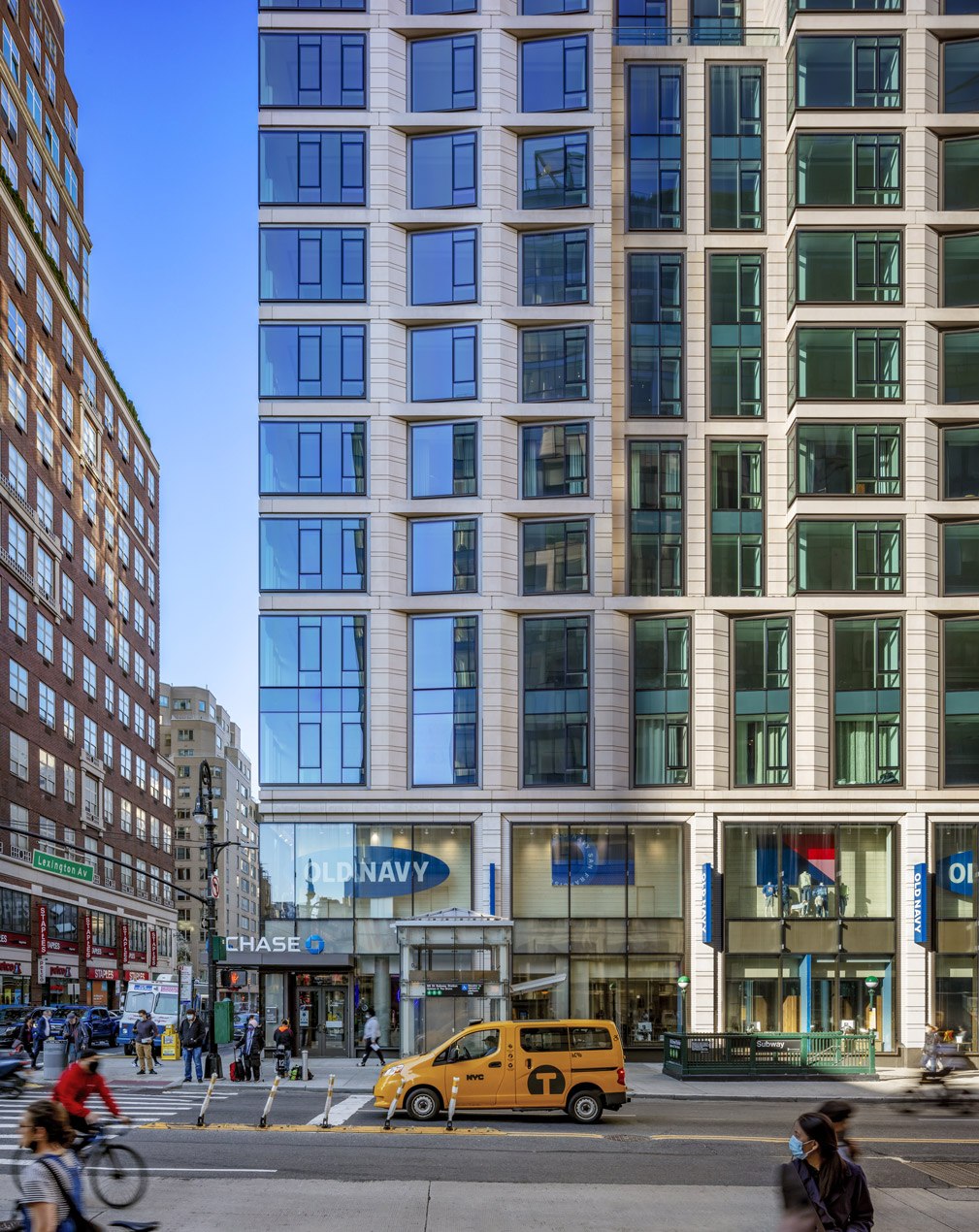
The Hayworth’s amenity spaces include a private lounge, exhibition kitchen, game room, fitness center, children’s playroom and a lush landscaped rooftop terrace.
Two levels of flexible space at the base of the building accommodate a wide range of retail tenants. Double-height storefront bays provide a prominent street-level presence. The building’s consistent structural column grid is ideal for retail layouts.
Each residential unit has its own heat pump, and the building has a cooling tower that serves as a heat exchange system.
All the water on the rooftop terraces is collected in a retention tank before being released into New York City’s stormwater system.
Sustainable materials include low-VOC millwork, natural wood floors and LED lighting.
Use of precast concrete on the tower’s upper levels lessened the impact of construction on the site and accelerated the construction schedule.
